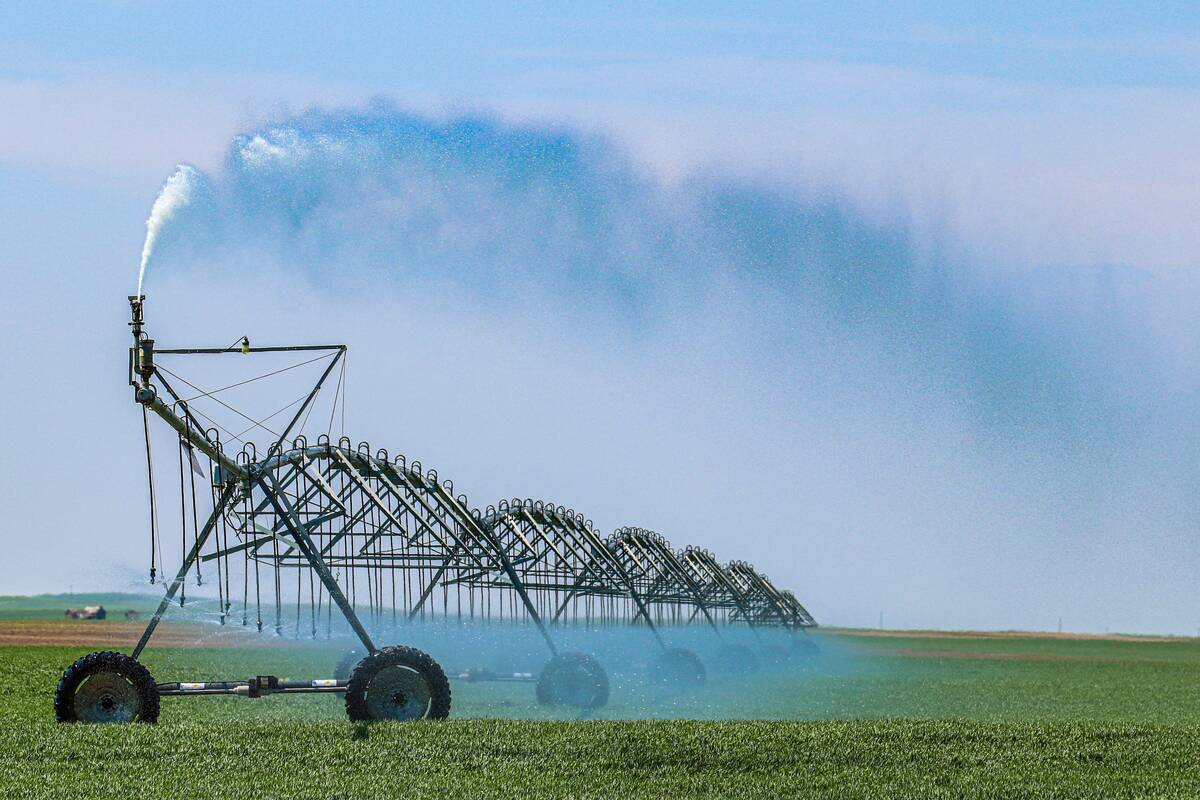The pad where tires touch soil is the precise spot where tractor performance and soil productivity can either be lost or enhanced. Understanding that pad is critical to tire management.
To help farmers make the most of the tire contact pad, Trelleborg has introduced its Adaptive Tire Management System (ATMS).
The technology acquires real-time tire information to optimize tractor performance. Data is gathered by one sensor mounted on each rim. These are fed to a central computer that analyzes the work conditions of each tire and then guides the operator in making necessary adjustments.
Read Also

Irrigation capacity questioned
Some are highly skeptical that Canada could massively expand irrigation in Saskatchewan and Alberta so that 10 per cent of Canada’s farmland is irrigated.
ATMS detects each tire’s dynamic load, inflation pressure and temperature. The operator is constantly given options to optimize the tractor configuration by adjusting inflation in each tire. The operator selects the most appropriate tire inflation pressure for an optimized footprint.
Factoring into the equation are:
- Reduced soil compaction.
- Correct tractor ballast.
- Best traction in the field.
- Drivability on the road.
- Lower rolling resistance.
TM1000 Progressive Traction tires can provide superior load capacity, reduce soil compaction and offer good traction. Tests show that Progressive Traction tires can reduce fuel consumption by three percent and extend tire service life by five percent.
Key to the Progressive Traction concept is the extra wing at the base on each side of each conventional lug. This not only makes the lug more rigid, but the double-edge bases provide extra flotation. The extra cutting edges on the wing provide better grip on the soil, thus reducing slippage. The extra lug serves as an additional terrace on the tread profile, thus improving self-cleaning capability and efficiency of the lug.
This wide lug base reduces tire sink into the soil. Sidewall flexibility leads to a wider footprint area resulting in low soil compaction.
HF1000 is another new tire solution, designed for increasing load capacity on large forage wagons and slurry tankers. The VF casing and steel belted structure ensures long durability and superior performance both in the field and on the road.
Under maximum stress on a fully loaded trailer, the innovative tread pattern ensures a footprint up to 12.5 percent wider compared to a premium competitor. In wet off-road conditions, the tread design has a self-cleaning feature resulting in 40 percent more cleaning for improved drivability.
Preventing tires from slipping on the bead is another challenge recently tackled by Trelleborg.
New manufacturing technology provides an advanced knurling design where the height of the profile is almost twice as high as conventional knurling. This provides maximum tire/wheel grip in high speed and high torque conditions. In addition, by coating the bead seat of the rim with black friction paint, the grip is significantly improved so tire slippage at extreme torque is prevented. The knurling has been increased by 50 percent.


















